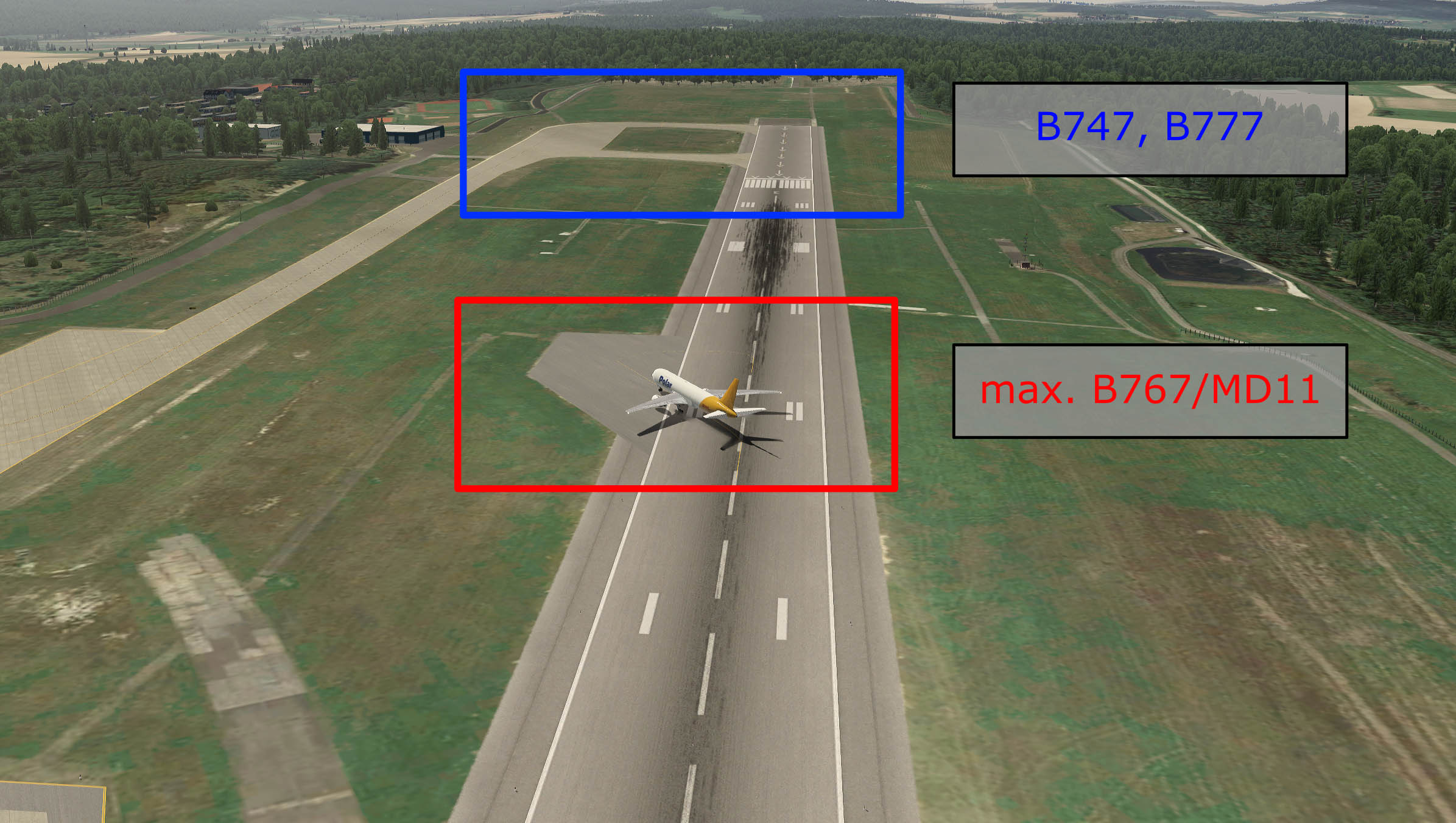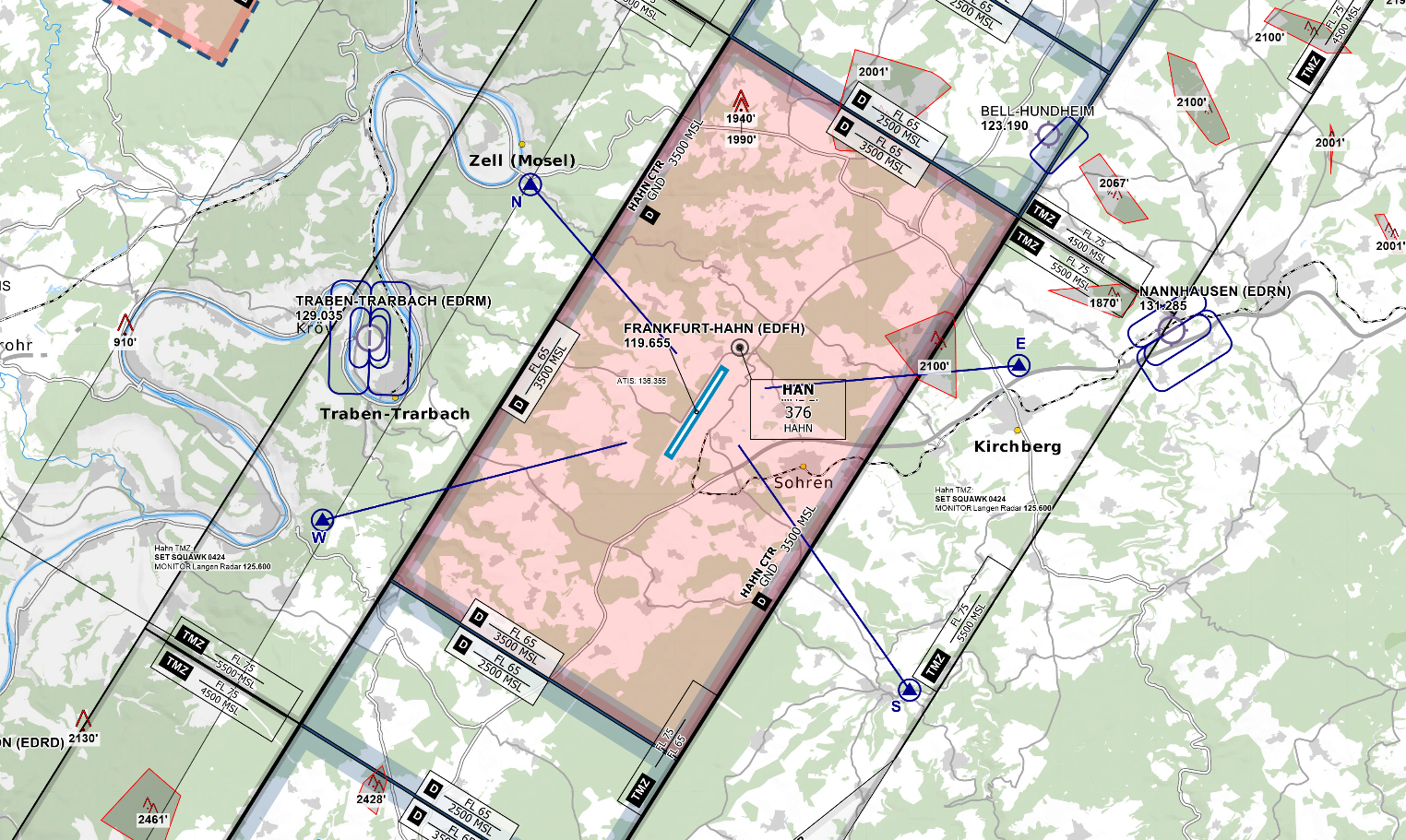Tower
Approaches: For both runways ILS (RWY 21 CAT III, RWY 03 CAT I) and RNP approaches are available.
IFR Departures
Departing IFR traffic switches to Radar (APP) frequency without separate instruction, immediately when airborne. Make sure the correct frequency is set inside the ATIS.
All departures shall be separated by radar separation or wake turbulence separation, whichever is greater. Departures flying the same SID shall be spaced by at least 5 NM when the following aircraft overflies the departure end of runway.
WTC Heavy Aircraft
Outbound Traffic: Traffic with WTC Heavy can only enter the runway via F or E. When RWY 03 is in use, this traffic has to enter RWY 21 via E and need to do a backtrack at the end of the runway. If more spacing between inbound traffic is required due to this, it has to be coordinated with the Arrival Sector.
Inbound Traffic: A backtrack is also required for Heavies landing on RWY 21 who need to vacate via E. The "turnpad south" between taxiway C and B2 may only be used for aircraft up to CAT D (B764/MD11). To prevent that Heavies will vacate via C it might be necessary to tell the pilot before issuing the landing clearance or shortly after landing, that a backtrack will be required.
 Backtack for Heavies at Hahn Airport
Backtack for Heavies at Hahn Airport
VFR Traffic
The control zone in Hahn extends from ground to 3500ft AMSL. VFR traffic exiting the control zone via reporting point NOVEMBER must stay at or below 2500 ft, for all other reporting points maximum is 3500 ft.
 Controlzone Frankfurt/Hahn - © openflightmaps.org
Controlzone Frankfurt/Hahn - © openflightmaps.org
Auto-Handoff
Frankfurt/Hahn utilizes an auto-handoff procedure for IFR departures where Tower will not hand off outbounds to the approach/center controller. Make sure to set the correct departure frequency in the ATIS.
Outbounds should contact APP/CTR immediately when airborne unless explicitly told to remain on Tower frequency.
